Walkthrough the Ghats
Every ghat (a broad flight of steps leading down to the river) in Varanasi has a story - either religious, historical, or mythological. One of these is the Manikarnika ghat which is famous as the cremation ghat. It is said that on an average about 200 bodies are burnt at this ghat everyday. This ghat gives you a glimpse of the truth of life. On this ghat also lies a half-sunk temple into the river.
 Legend has it that a nobleman decided to build a temple to repay the debt he owed to his mother to give birth to him and raise him. But the temple half sunk into the river - as no child can ever repay for his mother's sacrifices.
Legend has it that a nobleman decided to build a temple to repay the debt he owed to his mother to give birth to him and raise him. But the temple half sunk into the river - as no child can ever repay for his mother's sacrifices.
Amongst other famous ghats is another cremation Ghat Harishchandra Ghat. This ghat is named after Harishchandra, a king of the Suryavanshi (or the Solar) dynasty. The king was famous for his loyalty and adherence to justice. His dedication is reflected in the act when he did not cremate even his dead son without obtaining a fee.
Other notable Ghats of Varanasi are the Assi Ghat & Dasashwamedh Ghat where the morning & evening aarti, respectively, take place in Varanasi. Other ghats like Rana Mahal Ghat, Darbhanga Ghat have magnificent palaces. Get a glimpse of Ghats in Varanasi in this short video.
Take a walk to understand Life and Rebirth.
In Hinduism, there is a belief in rebirth. As per Hinduism, a soul reincarnates to serve negative karma and gets rewards for the positive. Another reason for rebirth is unfulfilled desires (or Maya). When a soul is free from desires, it will finally attain Moksha and live in a transcendent state of eternity.
Take a walk which begins with a fertility temple and ends on cremation grounds. While walking through the city, you will see a different aspect of Varanasi.
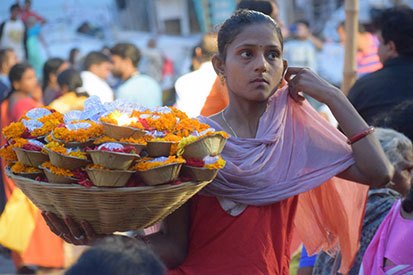 During this walk, you will get an insight into death & rebirth while discussing philosophy as you wander through Varanasi's narrow lanes, walking past Kali temple to the chai (tea) shop, eventually reaching one of the cremation grounds.
During this walk, you will get an insight into death & rebirth while discussing philosophy as you wander through Varanasi's narrow lanes, walking past Kali temple to the chai (tea) shop, eventually reaching one of the cremation grounds.
Visit Mukhti Bhawan
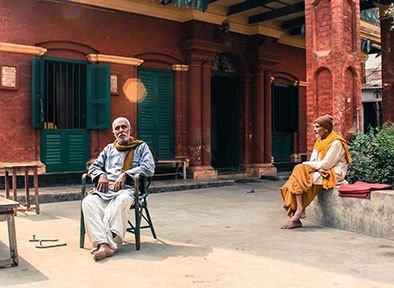 In Hindu Philosophy, Hindus give a lot of emphasis to Moksha. A term referring to various forms of liberation (or release). Moksha refers to freedom from the cycle of rebirth. It is freedom from ignorance, attained through self-realization and self-knowledge.
In Hindu Philosophy, Hindus give a lot of emphasis to Moksha. A term referring to various forms of liberation (or release). Moksha refers to freedom from the cycle of rebirth. It is freedom from ignorance, attained through self-realization and self-knowledge.
Mukti Bhawan is a unique guest house, or you can say a spiritual home, where Hindus come and are allowed to live so that they can die in Varanasi to attain Moksha. People on their death-bed can stay there for a maximum of two weeks. If a person does not die in these two weeks, he has to leave Mukti Bhavan to give his accomadation to someone else.
Visit Sarnath
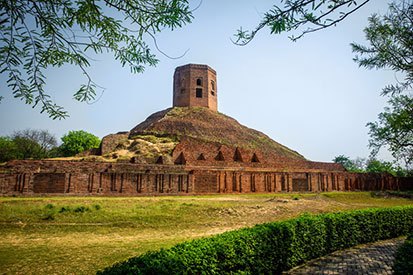 Sarnath is one of the important pilgrimage sites in Buddhism. It is here the Lord Buddha, after achieving enlightenment in Bodhgaya, preached his message of "middle way" to nirvana.
Sarnath is one of the important pilgrimage sites in Buddhism. It is here the Lord Buddha, after achieving enlightenment in Bodhgaya, preached his message of "middle way" to nirvana.
There are several Buddhist structures built in Sarnath. One of the most important monuments here is a stupa erected by Emperor Ashoka, a great follower of Buddhism, around 234 BC. The Government of India later adopted the Lion Capital of Ashoka Pillar as the national emblem. Most of these monuments are located in extensive gardens making it quite pleasant for visitors to spend some time here. Explore Sarnath in this short video.
While visiting Sarnath, do not forget to visit the Archaeological Museum. The museum has the figures and sculptures from the Mauryan, Kushana, and Gupta periods discovered during Sarnath's excavations. Here you can have a glimpse of some of the oldest images of Buddha, dating from the 9th to 12th centuries.
A trip to Varanasi is going back to the time immemorial! We, at Indo Asia Tours, are all about the handcrafted tours, memories, and moments you take out of your trip, and believe us, this escapade will be a life-changing one!

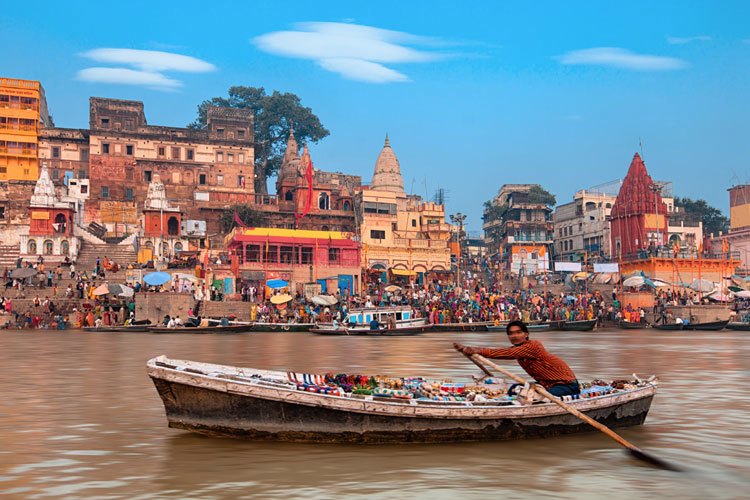
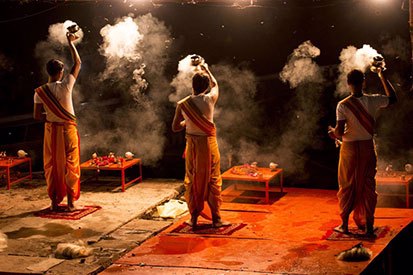 One of the most spectacular things about Varanasi is the Great Ganga Aarti ceremony. It is a solace to seek divinity along the Ghats of Varanasi that brings heaven on earth.
One of the most spectacular things about Varanasi is the Great Ganga Aarti ceremony. It is a solace to seek divinity along the Ghats of Varanasi that brings heaven on earth.
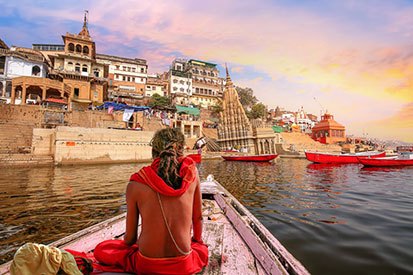 One of the rituals is to take a bath in the Ganges River. It is believed that a bath in the Ganges River would free you from the circle of rebirth. It is fascinating to see the pilgrims offering sweets, flowers, and holy water to the Sun God.
One of the rituals is to take a bath in the Ganges River. It is believed that a bath in the Ganges River would free you from the circle of rebirth. It is fascinating to see the pilgrims offering sweets, flowers, and holy water to the Sun God.
 The Maratha ruler, Late Maharani Ahilya Bai Holkar of Indore, built the temple in the present form in 1780 AD. While Non-Hindus are not allowed inside the original temple, there is a replica of the temple in Benaras Hindu University which can be visited by everyone.
The Maratha ruler, Late Maharani Ahilya Bai Holkar of Indore, built the temple in the present form in 1780 AD. While Non-Hindus are not allowed inside the original temple, there is a replica of the temple in Benaras Hindu University which can be visited by everyone.
 Legend has it that a nobleman decided to build a temple to repay the debt he owed to his mother to give birth to him and raise him. But the temple half sunk into the river - as no child can ever repay for his mother's sacrifices.
Legend has it that a nobleman decided to build a temple to repay the debt he owed to his mother to give birth to him and raise him. But the temple half sunk into the river - as no child can ever repay for his mother's sacrifices.
 During this walk, you will get an insight into death & rebirth while discussing philosophy as you wander through Varanasi's narrow lanes, walking past Kali temple to the chai (tea) shop, eventually reaching one of the cremation grounds.
During this walk, you will get an insight into death & rebirth while discussing philosophy as you wander through Varanasi's narrow lanes, walking past Kali temple to the chai (tea) shop, eventually reaching one of the cremation grounds.
 In Hindu Philosophy, Hindus give a lot of emphasis to Moksha. A term referring to various forms of liberation (or release). Moksha refers to freedom from the cycle of rebirth. It is freedom from ignorance, attained through self-realization and self-knowledge.
In Hindu Philosophy, Hindus give a lot of emphasis to Moksha. A term referring to various forms of liberation (or release). Moksha refers to freedom from the cycle of rebirth. It is freedom from ignorance, attained through self-realization and self-knowledge.
 Sarnath is one of the important pilgrimage sites in Buddhism. It is here the Lord Buddha, after achieving enlightenment in Bodhgaya, preached his message of "middle way" to nirvana.
Sarnath is one of the important pilgrimage sites in Buddhism. It is here the Lord Buddha, after achieving enlightenment in Bodhgaya, preached his message of "middle way" to nirvana.
 Thank you, patrons, for reposing faith in our destinations and enquiring for customised virtual destination awareness training programs. We are proud to conduct them successfully so far and are looking forward to hold similar virtual destination awareness training programs for your team or yourself or a virtual tour for your clients. Let us know the destination of your interest along with your convenient date / time and we will be happy to set up a program for you.
Thank you, patrons, for reposing faith in our destinations and enquiring for customised virtual destination awareness training programs. We are proud to conduct them successfully so far and are looking forward to hold similar virtual destination awareness training programs for your team or yourself or a virtual tour for your clients. Let us know the destination of your interest along with your convenient date / time and we will be happy to set up a program for you.


